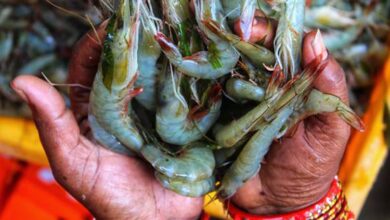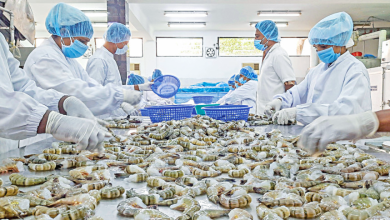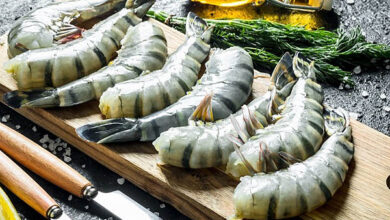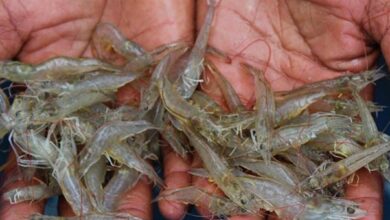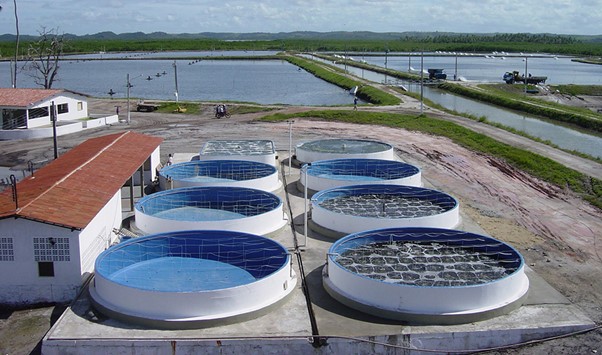
Shrimp care includes maintaining the quality of the water, providing adequate nourishment, and reducing stress and disease. A well-designed nursing system can aid in achieving these objectives by providing the shrimp with a controlled environment and enabling their care.
A multi-phase shrimp farming system incorporates a nursery phase between the hatcheries and the grow-out ponds. This can enhance farm management, increase productivity, and reduce harvest time.
Hasanuddin Atjo is one of Indonesia’s pioneers of the nursery system. Atjo believes that implementing a nursery phase when cultivating shrimp might boost annual output by reducing the length of grow-out periods and enhancing survival rates.
Atjo explained that the shrimp development cycle resembles a sigmoid curve, beginning with a period of slow growth, followed by a period of rapid growth, and finally ending with a period of slower growth.
During the initial sluggish development phase, which lasts for the first 50 days after hatching, cell division occurs steadily in the shrimp’s body. In this time they do not need an extensive pond. Nonetheless, nutrition and the environment must be enhanced for better health of the shrimp. Consequently, shrimp don’t need a large pond during their slow growth phase, which continues for the first 50 days following hatching. Still, nutrition and the environment must be controlled.
Atjo suggests that this is the optimal moment to transfer shrimp to larger ponds. In addition, the larger juveniles collected from the nursery can adapt to varying environments. Moreover, they will perform better if their environment and nutrition are regulated carefully. Atjo explains that After being transferred from the nursery, the grow-out phase should last between 70 and 90 days.
“Another reason to consider the nursery system is that it allows for the optimization of shrimp nutrition,” he added.
There are actually many important advantages to nursery systems. In general, they make it easier to control and handle the young shrimp in a way that is practical and good for the economy.
Increased organizational control and biosecurity is one key benefit. By limiting the culture area and capacity into a series of densely stocked and managed tanks/raceways, it is possible to have a much higher level of control over several environmental parameters, feeds and feeding, and water quality. These actions lead to better economic efficiency.
Also, controlling smaller unit areas or volumes makes it easier to keep out pathogens, predators, and competitors through mechanical, chemical, or biological filtration. And it is possible to get a more accurate estimate of the number of juveniles and control the death rate of grow-out stocking, which is a big help in handling feed during the pond production phase.
In some parts of Vietnam, indoor feeding systems let PLs (Post Larvae) be stocked early during the colder months and give them a head start on growth. Closed intensive nursery systems can make the stocking window for yearly hatchery outputs even bigger.
For farms that aren’t connected to hatcheries, intensive nursery head-start tactics may make it possible to buy seed stock before peak demand times for less money and with a better chance of getting seed stock.
There are also some problems with nursery systems, such as the need for more infrastructure (which costs more to build than traditional pond systems) and more trained manpower are needed (often to the level of hatchery operators). The system is much less forgiving of mistakes, failures, and problems made by the operator or with parts or tools.
Systematically producing shrimp in a regulated and effective manner is made achievable by shrimp nursing systems, which are crucial improvement for the aquaculture sector. These systems can help to provide a dependable and sustainable source of shrimp for consumption by offering a regulated environment for young shrimp to grow and mature.
Jaber Bin Abdul Bari
Department of Oceanography, NSTU

